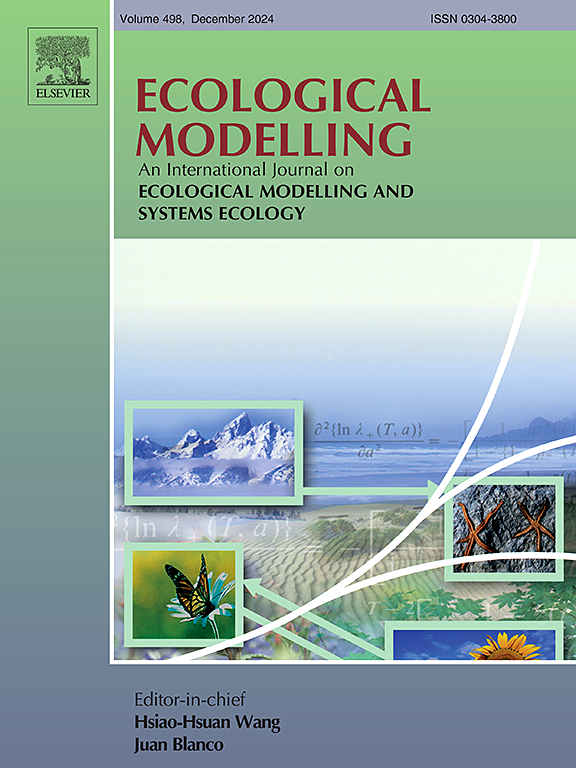Improving forest gross primary productivity estimation through climate and trait integration
IF 2.6
3区 环境科学与生态学
Q2 ECOLOGY
引用次数: 0
Abstract
Accurate simulation of ecosystem process-based models is generally determined by plant functional parameterizations. However, due to the lack of observed plant functional traits, many traits in plant functional types (PFT) are constant in the process-based models. Actually, there are significant variations in the plant trait even among the same PFT across different environmental gradients. We developed a new parameterization scheme (plant functional-climate types, PFCT), incorporating plant trait variability and climate regulation into the Biome-BGCMuSo model. Seven key trait parameters for forest gross primary productivity (GPP) were first identified using 91 flux towers and sensitivity analysis, including leaf flush rate time (LFRT), carbon to nitrogen ratio in leaves (C:Nleaf), light extinction coefficient (k), leaf nitrogen return (FLNR), mean residence time per plant (MRpern), vapor pressure deficit factor (VPDf), and specific leaf area (SLA). The Plant Functional Trait Classification (PFCT) was developed by integrating PFT with Köppen-Geiger climate zones, effectively constraining PFT through climatic characteristics and highlighting the interactions between plant traits and environmental conditions. The statistical analysis based on TRY plant databases and parameter correction algorithms confirms that these parameters exhibit significant changes within PFT and climate zones. The PFCT scheme acknowledged the significant variability in key trait parameters within PFT, which is often overlooked in traditional process-based models. Three parameterized simulation schemes were designed based on the variability gradient of key trait parameters, and the accuracy of simulated GPP under the PFCT parameterization scheme was verified through comparison. Validation against 91 forest flux sites and two global carbon flux products revealed high correlation (r = 0.89) and low error metrics (Bias = 2.14 g C/m²/day, RMSE = 2.84 g C/m²/day) at the site level, and good agreement at the regional level (r = 0.76, Bias = 1.16 g C/m²/day, RMSE = 2.20 g C/m²/day). The PFCT parameterization scheme (S3) increased the original model's (S1, PFT-based parameterization) overall accuracy by 21.84 %, achieving over 80 % of the accuracy of trait-based parameterization (S2). These findings emphasize the necessity of incorporating plant traits variability and climatic regulation from various PFT in accurate ecosystem modeling.

求助全文
约1分钟内获得全文
求助全文
来源期刊

Ecological Modelling
环境科学-生态学
CiteScore
5.60
自引率
6.50%
发文量
259
审稿时长
69 days
期刊介绍:
The journal is concerned with the use of mathematical models and systems analysis for the description of ecological processes and for the sustainable management of resources. Human activity and well-being are dependent on and integrated with the functioning of ecosystems and the services they provide. We aim to understand these basic ecosystem functions using mathematical and conceptual modelling, systems analysis, thermodynamics, computer simulations, and ecological theory. This leads to a preference for process-based models embedded in theory with explicit causative agents as opposed to strictly statistical or correlative descriptions. These modelling methods can be applied to a wide spectrum of issues ranging from basic ecology to human ecology to socio-ecological systems. The journal welcomes research articles, short communications, review articles, letters to the editor, book reviews, and other communications. The journal also supports the activities of the [International Society of Ecological Modelling (ISEM)](http://www.isemna.org/).
 求助内容:
求助内容: 应助结果提醒方式:
应助结果提醒方式:


